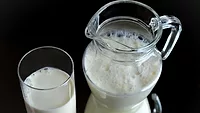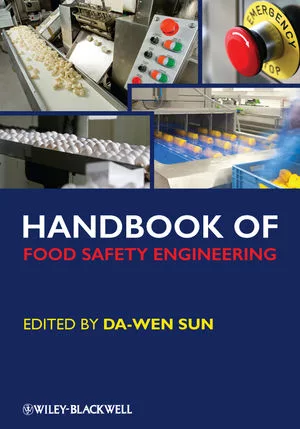Scientists Determine Crystal Structure of Chinese Milk Contaminant
A team of scientists at the University of Hull has uncovered the crystal structure of melamine cyanurate, the substance thought to be responsible for the 2008 Chinese milk scandal, which caused around 300,000 babies to fall ill.
It is hoped the discovery will make it easier to detect accurately levels of the toxin in foodstuffs, helping to prevent future food scares.
Melamine is an important industrial chemical that is commonly used to make tough plastics, such as in laminate flooring or kitchen utensils. However, in recent years there have been several incidents in which the presence of melamine in food has caused people and animals to fall ill.
In 2008, six babies died and approximately 300,000 became ill after melamine was added to a low-cost variety of powdered milk formula.
“There have been cases where melamine has been deliberately added to certain products to make the protein content look far higher than it really is,” said Dr Timothy Prior, lecturer in inorganic chemistry at the University of Hull.
“Some simple tests for protein look only at how much nitrogen is in a product, so by adding a nitrogen-rich substance, such as melamine, the test results can be manipulated. That’s what happened in China in 2008.”
When ingested, melamine can combine with a second chemical, called cyanuric acid, to form crystals within the kidneys. In extreme cases, these crystals can form larger kidney stones and as a result, lead to renal failure.
Discovering the structure of the crystals was a stroke of luck for Dr Prior, as the team were actually working on a completely different project at the time.
“We were attempting to make new, industrially-useful metal compounds when we accidentally made crystals of melamine cyanurate,” he said.
“We examined the crystals and noticed a discrepancy between the previously published model and what we could see, so we set about trying to resolve the true structure for ourselves.”
Despite the potential dangers of melamine contamination, current screening methods for the toxin are generally expensive and time consuming.
Dr. Prior is hopeful that this research will lead to a simple and accurate test that can help prevent a repeat of the 2008 crises.
“Now we have precise information about the way melamine sticks to cyanuric acid, it may be possible to exploit this interaction to create a sensor for melamine.”
The 2008 scandal has had a lasting impact in China and in April 2013, retailers in the UK were forced to ration sales of powdered baby milk in order to prevent some individuals from ‘bulk buying’ the product for export overseas.
Dr. Prior’s results are published online at pubs.rsc.org/en/content/articlelanding/2013/CE/C3CE40709H.
Looking for quick answers on food safety topics?
Try Ask FSM, our new smart AI search tool.
Ask FSM →








